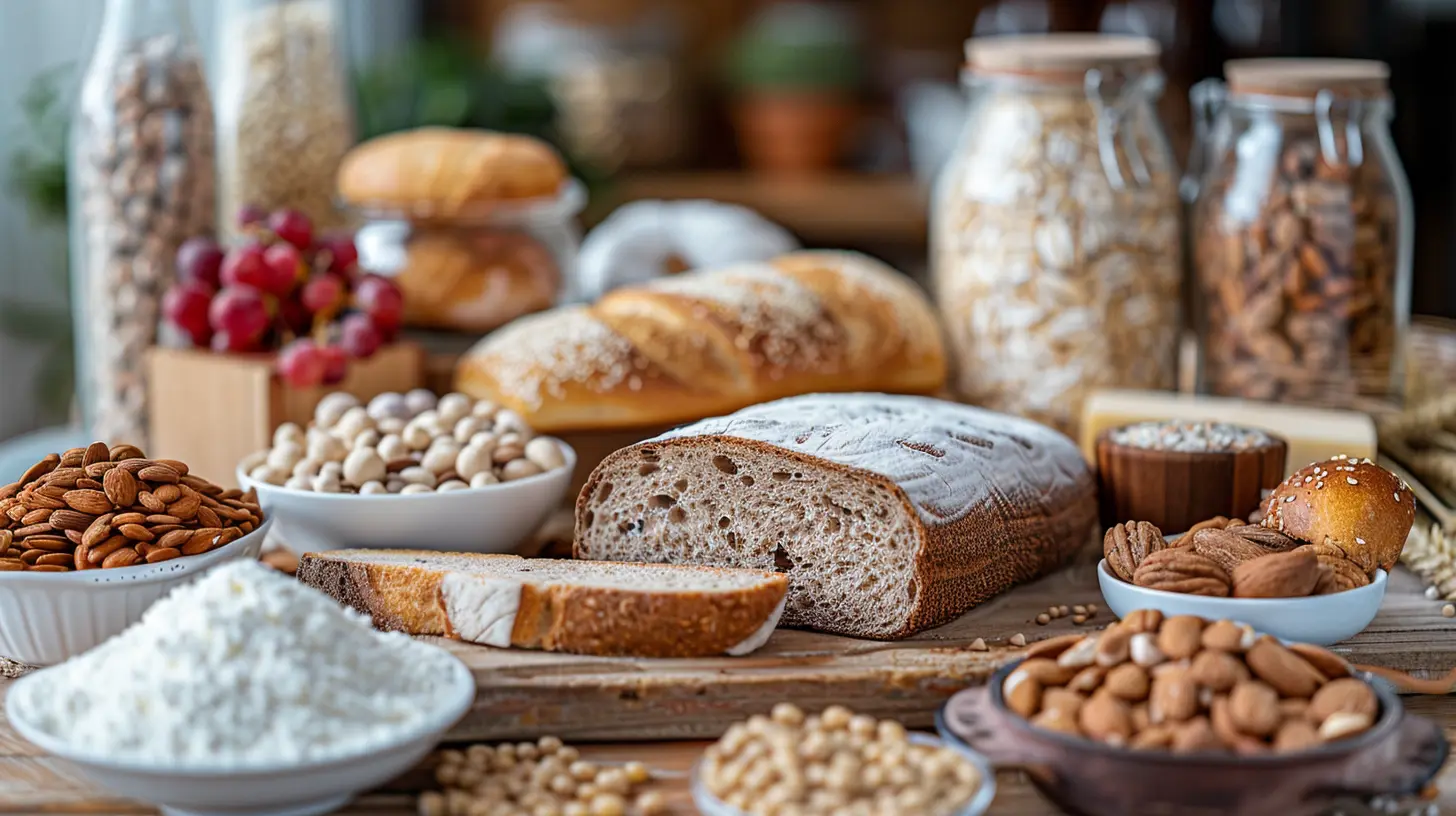Managing Food Allergies in a Multi-Allergen Household
2 October 2025
Living in a home where multiple food allergies exist can feel like walking a tightrope. One wrong ingredient or cross-contamination could lead to a severe allergic reaction. Sounds stressful, right? Well, it doesn’t have to be! With the right strategies, managing food allergies in a multi-allergen household can become second nature.
Whether you're dealing with nut, dairy, gluten, or shellfish allergies—or a combination of them all—having a well-organized approach can help keep everyone safe without making meals a nightmare. Let's dive into practical tips that will make your kitchen allergy-friendly and ensure everyone in your home can eat without fear.

Understanding Food Allergies
Before we get into the nitty-gritty of managing allergies at home, let’s cover the basics. Food allergies occur when the body’s immune system mistakenly identifies a harmless food protein as a threat and launches an attack. The result? Symptoms that can range from mild (itchy skin, stomach discomfort) to severe (anaphylaxis, which requires immediate medical attention).Common Allergens
While people can be allergic to almost any food, there are some repeat offenders. The top food allergens include:- Milk
- Eggs
- Peanuts
- Tree nuts (almonds, walnuts, cashews)
- Wheat
- Soy
- Fish
- Shellfish
When you have multiple allergens in your household, things can get tricky—especially if someone’s safe food is another person’s allergen. So, how do you handle it? Keep reading!

Setting Up an Allergy-Safe Kitchen
1. Label Everything
When multiple allergens are in play, clear labeling is a game-changer. Use color-coded stickers or markers to distinguish safe and unsafe foods. You can even designate separate storage areas in the pantry and fridge for allergen-free items.2. Separate Cooking Utensils and Cookware
Cross-contamination is one of the biggest risks in a multi-allergen household. To prevent it:✅ Use separate cutting boards, knives, and utensils for allergen-free foods.
✅ Consider designating specific cookware for each allergen (e.g., one pan for gluten-free meals, another for dairy-free dishes).
✅ Wash everything thoroughly with hot, soapy water after each use.
3. Avoid Cross-Contamination in Food Prep
Even tiny traces of an allergen can trigger a reaction. That’s why you should:- Prepare allergen-free meals first to reduce the risk of contamination.
- Use separate butter knives, toasters, and condiments to prevent allergen transfer.
- Keep hands washed and surfaces wiped down regularly.
4. Create a Clear Meal Plan
Planning meals in advance helps you navigate multiple food allergies with ease. Try:- Cooking meals that are safe for everyone—this minimizes the risk of mistakes.
- Using ingredient swaps so one dish can cater to multiple allergies (e.g., dairy-free milk for those with milk allergies, gluten-free pasta for those avoiding wheat).
- Batch cooking allergens separately and storing them in labeled containers to be added at serving time.

Smart Grocery Shopping Strategies
Navigating the grocery store with multiple allergies can feel overwhelming. But with a little strategy, you can shop safely and efficiently.1. Check Labels Like a Detective
Food packaging can be sneaky. Always read labels carefully—even if it's a product you've bought before. Manufacturers sometimes change ingredients without warning. Look out for “may contain” or “processed in a facility with” warnings, as even trace amounts of allergens can be dangerous.2. Shop Allergy-Friendly Brands
Many brands cater specifically to individuals with food allergies. Companies like Enjoy Life, MadeGood, and Partake Foods create treats free from the top allergens. While they might be a bit pricier, the peace of mind is worth it.3. Stick to Whole Foods When Possible
Whole, unprocessed foods like fruits, vegetables, rice, and fresh meats are generally safer than packaged goods, which may contain hidden allergens. Cooking from scratch also gives you total control over what goes into your meals.
Managing Meals for the Whole Family
1. Family-Style Meals with Customization Options
Instead of cooking multiple dishes, prepare base meals where individuals can customize their portions. Example? A taco night where everyone picks their own toppings—some dairy-free, some gluten-free, and some nut-free.2. Create "Safe" and "Shared" Zones
If totally allergen-free meals aren’t an option, designate areas of the kitchen where allergen-free foods are prepared and stored separately from shared foods.3. Teach Allergy Awareness to the Whole Family
You can't be the only one playing food police! Help family members understand the importance of food safety. Teach kids (and adults) to:- Wash hands before and after meals.
- Never share utensils or drinks.
- Recognize symptoms of allergic reactions (just in case something goes wrong).
Dining Out and Social Gatherings
Let’s be real—having food allergies can make eating out feel like a gamble. But that doesn’t mean you have to avoid restaurants or family gatherings altogether.1. Call Ahead
Before dining out, call the restaurant to ask about their allergy policies. Many places now have allergen-friendly menus or can accommodate special requests.2. Bring Your Own Snacks
If you're heading to a party or event, pack safe snacks or even a full meal. This way, you’ll never be stuck without a safe option.3. Be Your Own Advocate
Don’t be shy about informing restaurant staff or hosts about your allergy needs. Your health is more important than worrying about inconveniencing others.
What to Do in Case of an Allergic Reaction
Even with the most careful planning, accidents can happen. Knowing what to do in an emergency is critical.1. Recognize the Symptoms
Mild reactions may include itching, hives, or stomach pain. But severe reactions—like difficulty breathing, swelling of the face or throat, and dizziness—can be life-threatening.2. Always Have an Emergency Plan
- Keep antihistamines on hand for mild reactions.- Make sure epinephrine auto-injectors (like EpiPens) are always accessible.
- Educate family members on how to use an epinephrine injector and when to call 911.
3. Wear Medical ID
If someone in your household has severe allergies, a medical ID bracelet can be a lifesaver in case of an unexpected reaction, especially in public places where people may not be aware of their condition.Final Thoughts
Managing food allergies in a multi-allergen household might seem overwhelming at first, but with the right systems in place, it becomes second nature. By creating a safe kitchen, planning meals thoughtfully, shopping smart, and educating your family, you can turn your home into a place where everyone can eat with confidence.At the end of the day, it’s all about teamwork, communication, and a little creativity. Food allergies don’t have to limit your life—just change the way you approach it.
all images in this post were generated using AI tools
Category:
Food AllergiesAuthor:

Laurie Barlow
Discussion
rate this article
1 comments
Astralis Wade
Managing allergens? It's like hosting a dinner party where everyone gets their own menu!
October 18, 2025 at 4:35 AM

Laurie Barlow
Absolutely! It requires careful planning and creativity to ensure everyone feels included and safe at the table.


